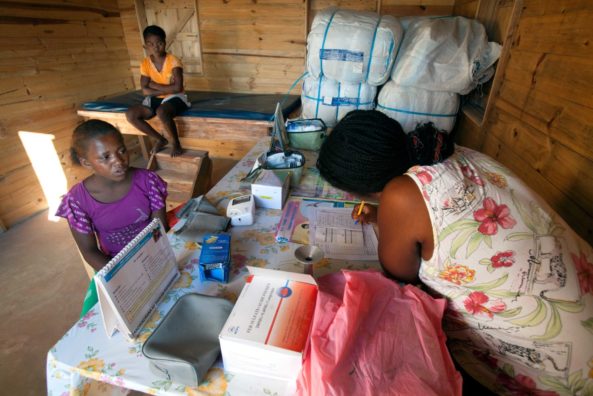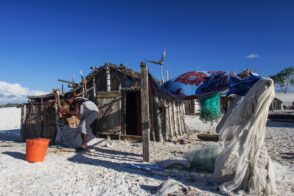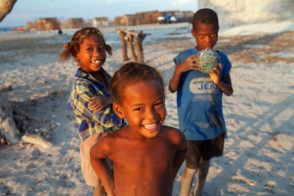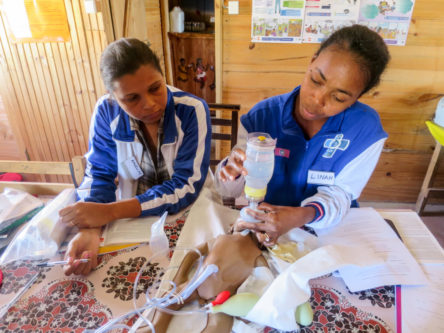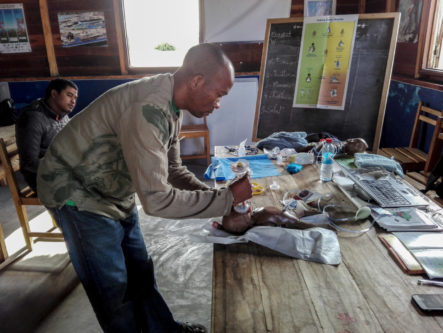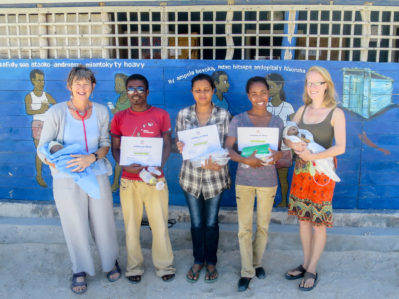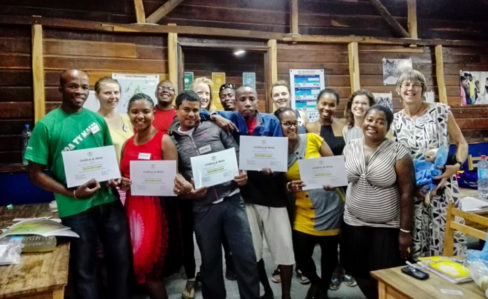Close your eyes.
Imagine that a baby is born.
The baby is not breathing.
There is no one around who can help the baby.
The baby dies.Now imagine that another baby is born.
The baby is not breathing.
YOU are there to help the baby: you dry the baby, keep her warm, and you help her to breathe using a bag and mask.
The baby starts to cry.
It’s a stark and poignant way to start the Helping Babies Breathe (HBB) course, but it works. Silence envelops us all as we reflect on the vital importance of having someone present at every birth who is skilled in the resuscitation of a newborn baby.
Then, when the baby starts to cry in the story, our plastic model baby, named NeoNatalie, really starts to cry with the help of the HBB squeaky toy. This, as anticipated, brings relief, a laugh and a round of applause.
The course begins.
During our stay in the village of Andavadoaka in southwest Madagascar in 2014, consultant neonatologist Dr Alison Leaf and I remarked that training health workers in how to resuscitate newborn babies would be an effective way of increasing newborn survival.
Most babies who die, die on the day that they are born. In Madagascar, 21 babies per 1,000 live births die during the first 28 days of their lives (that’s five times more than in the UK), and neonatal mortality rates are likely to be even higher in Andavadoaka due to its remoteness.
One of the aims of the UN’s 3rd Sustainable Development Goal is for neonatal mortality rates to be less than 12 per 1,000 live births, and Madagascar’s Ministry of Public Health is trying to achieve this, but resources are limited. Training and equipment are often focused on more urban areas and struggle to reach isolated communities such as Andavadoaka. For progress to be made in areas like this, different approaches must be taken.
About one in every ten babies needs help at birth. This help should be given within “The Golden Minute” – the first minute after birth. The baby should be dried, and breathing should be stimulated by rubbing the baby’s back, and removing any mucus from the mouth and nose. These basic manoeuvres will be enough to make most babies cry. However, if they don’t, the umbilical cord needs to be safely cut and then, using a bag and mask device, air can be pushed gently into the lungs to give the baby oxygen. These very simple interventions will save the lives of the vast majority of babies who aren’t breathing when they’re born.
The American Association of Pediatrics, in association with Laerdal Global Health and USAID, has developed a training programme called “Helping Babies Breathe” (HBB) in order to equip health workers with these life-saving skills. The programme has already demonstrated significant reductions in neonatal mortality and stillbirth rates in several countries.
Eighteen months on from our first visit, Alison and I are back in Andavadoaka! We’ve invited staff from the six Centres de Santé de Base (CSBs; the local public health centres) in our service area to attend a two-day Helping Babies Breathe course. They’re eager to learn: they work alone in their CSBs, delivering on average 3-5 babies every month, and have had little prior training in looking after newborns. None of them had ever used a bag and mask before.
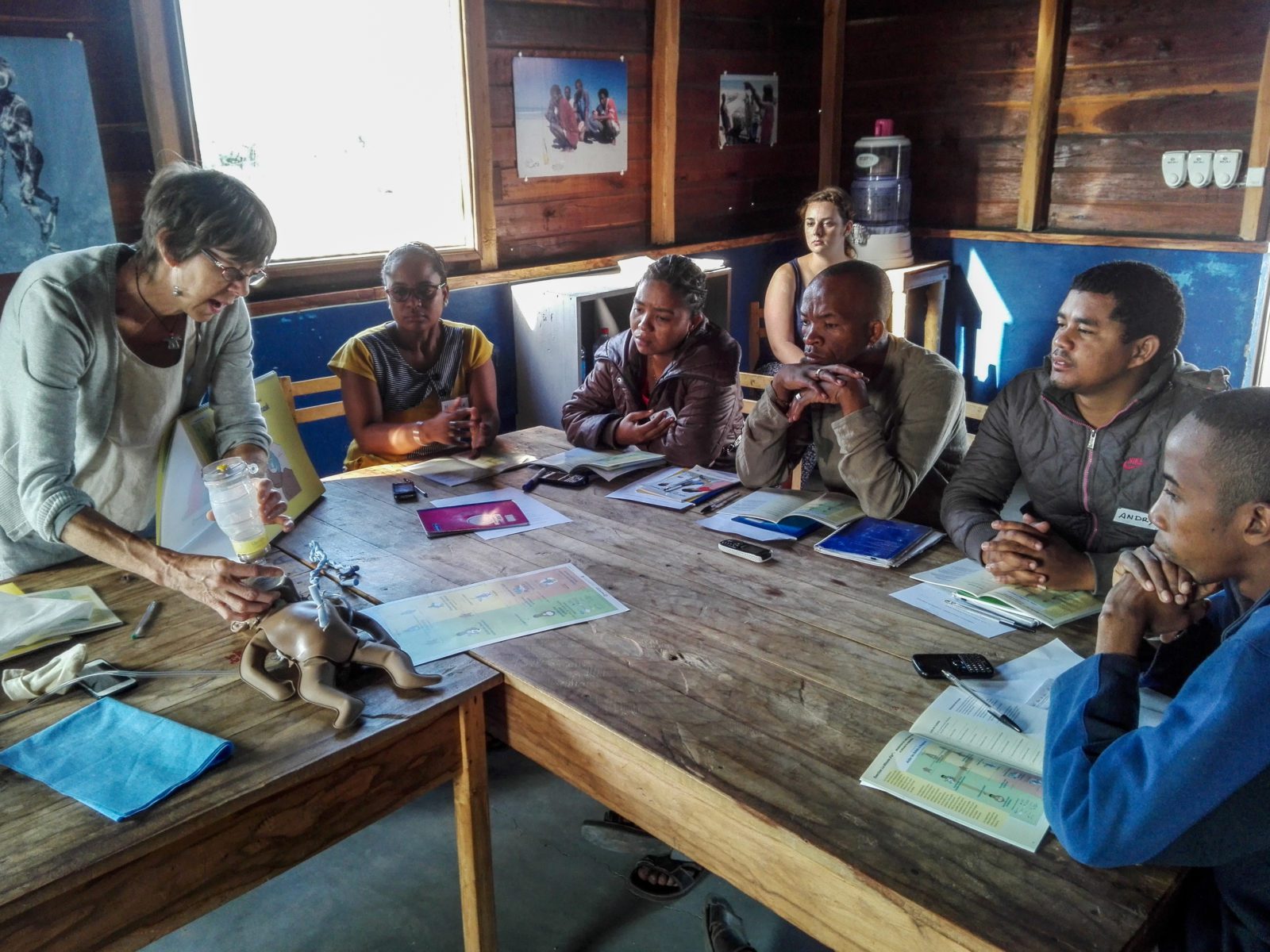
Dr Alison Leaf introduces bag and mask ventilation to the CSB staff attending the HBB course
After a warm tonga soa (welcome) to the participants, we went through what happens during a “normal” birth and how the “normal” baby behaves. Thorough preparation is key – ensuring the delivery room is clean and warm, and equipment is ready and checked. Communication with the mother and her birth companion is important to make her comfortable. Most babies cry after delivery and, after drying, should be placed skin-to-skin with their mother in order to keep them warm and encourage breastfeeding and bonding.
Having re-energised ourselves with locally-made tamarind juice and still-warm bokoboko (deep-fried dough balls), it was time to learn about the non-breathing baby. To emphasise the importance of “The Golden Minute”, we played a little game: we all held our breath for as long as we could. The winner managed 50 seconds; a minute is actually quite a long time.
We practised scenario after scenario after scenario using role plays, with some enthusiastic acting from both the CSB staff and the teachers! We all posed as pregnant women to assess the participant’s ability to manage a delivery from the moment the patient arrives at the health facility. The participant was then expected to deliver the baby, and recognise that she, NeoNatalie, was not breathing. The participant was then expected to follow the steps that they had been taught. The key feature of Helping Babies Breathe is its practical nature: the process of assessing the baby and offering life-saving treatment must become second nature in order to save lives in the future. It’s a sobering thought that the next time the participants perform these procedures will be with a real-life baby.
Once these skills had been mastered, it was time for exams. The students completed a written test, a skills test to assess their ability to correctly and safely use the bag and mask, and lastly, another role play scenario. By this point, we were watching Oscar-worthy, life-saving performances! We were delighted that all participants had made real progress during the course, and everyone passed all of the tests.
None of the CSBs had a bag-valve mask or suction device, so we donated sets to each CSB. Improving the resources available for neonatal resuscitation is a valuable aspect of the course, as health workers require equipment as well as knowledge and practical skills. It is vital to maintain the equipment so that it’s always available for use, and so Alison taught us all how to clean, store and check all of the items.
Finally, to close the training, we held a short ceremony for the presentation of certificates and thanked the CSB staff for their hard work, motivation and participation. We hope that they feel confident to put their new skills into practice. We advised them to keep a logbook of all of their deliveries so that we can follow up with them in a couple of months’ time.
If you feel moved to support our community health programme then you can donate now.
Blue Ventures’ community health programme is dedicated to improving isolated communities’ access to health services, and to catalysing sustainability through training and support.
By working together with the government health systems to provide staff training and increase health facility readiness for neonatal resuscitation, we will be strengthening local health services and improving the quality of care available to these communities. We were also incredibly fortunate to have a very experienced and dedicated local midwife, Linah, on the HBB course. She was selected to complete further training in order to be able to teach the HBB course independently. In this way, she’ll be able to provide ongoing support to the CSB staff, as well as train any new health workers in the area.
These high-impact training courses complement our other maternal and child health work whereby pregnant women are encouraged to deliver their babies at CSBs. Due to the remote location of Andavadoaka, access to quality obstetric medical services is poor so babies are paradoxically more in need of quality medical care at birth. Historically, little has been done to address these critical needs in this isolated area; Helping Babies Breathe is a big step for increasing newborn survival in Velondriake.
I’d like to express my gratitude to Alison for being an inspiring teacher for me and for all of the course participants. Without her passion and enthusiasm, Helping Babies Breathe in Velondriake would not have come to fruition. Misaotra bevata! (Thank you!)


